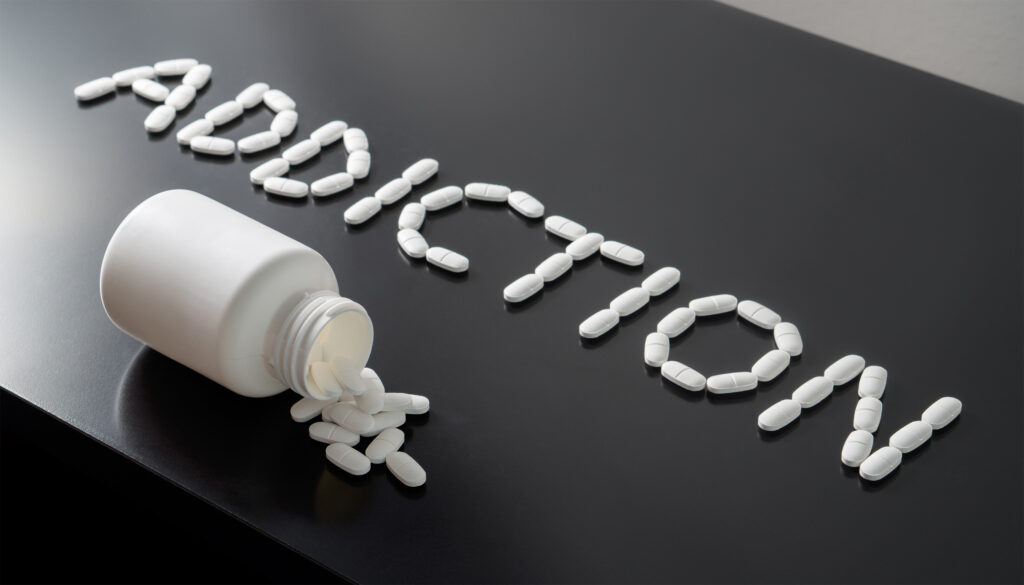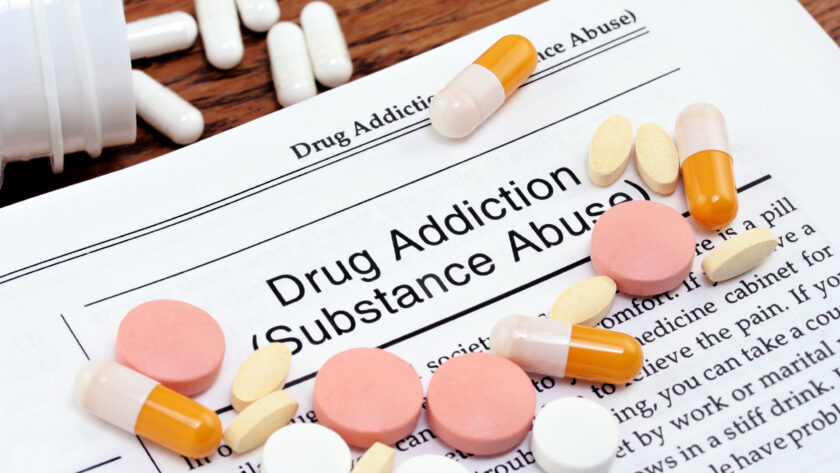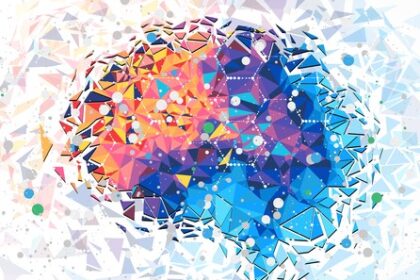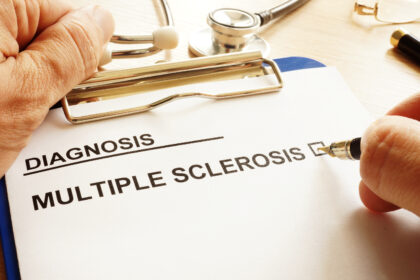How Substance Abuse affects Schizophrenia
Introduction
Steven is a thirty-four year old man experiencing trouble maintaining regular work. He has been unemployed for three months, with his last job being a food server at a local restaurant. He was let go from this job for making too many mistakes and missing too many shifts. He has always lived with his parents, Samuel and Darlene, albeit for a few short stints of homelessness. His parents explain that they frequently call him out of work when he is experiencing episodes of intense catatonic behavior. Steven has a tenth-grade education and his parents have mentioned he never seemed interested in school.
Steven’s stepfather Samuel is an electrician employed at a local shipyard. Steven’s mother is a registered nurse who works part time at a small, quick-service medical center. Samuel claims that Steven has progressively become more aggressive in his later years and suggests he has become harder to control as well. Darlene describes a recent incident which involved physical violence and resulted in the police being called. Steven was arrested during this incident for domestic violence. He has also been arrested in the past for similar offenses. His biological father does not live nearby, and Steven has seen him only a few times. He also has a thirty-five year old biological sister who does not live in the same household anymore.
Steven is interested in the guitar and can be creative at times, but his parents explain that drugs and alcohol have clouded his mind throughout most of his adult life. He has had a tumultuous past riddled with many illicit drug addictions including heroin, meth, and marijuana. He is currently addicted to alcohol and drinks daily. He is a daily cigarette smoker as well. Although he is supposed to be paying rent at his parents, he always spends his disability money on his vices.
Steven has enumerated details of his psychotic episodes, explaining that it feels as though someone is trying to control him. He hears voices and claims that they encourage his behavior. He often feels very alone. In his instances of homelessness, he would wander the side of the road begging for money which he would spend on drugs and alcohol. He has also admitted to having built a heavy tolerance to drugs and alcohol. His family explains that when speaking with Steven, his thoughts seem disorganized, and he often does not make sense.
Steven has been through numerous inpatient treatment facilities. He has had many doctors as well. Still, Steven’s family has expressed concern for his life, fearing that he may wind up killing himself of an overdose, or during one of his psychotic episodes which frequently involve many delusions and violence. They have encouraged him to seek counseling once more to give him more skills to survive in the adult world and to possibly save his life.
Clinical History

Steven’s episodes and symptoms started at an early age, although he did not begin receiving specialized attention for his ailments until late adolescence. It has been difficult to get Steven to maintain treatment, and he often quits a program before he is diagnosed. Still, some clinical psychologists suggest he may be afflicted with schizophrenia and substance use disorder. His symptoms have been getting worse with age. In the last few years, Steven has exhibited signs of hygiene deterioration. He has been more violent, displaying increased hostility in his thirties. Previous psychologists have noted Steven’s general apathy, depression, social withdraw, and irrational thinking have unfavorably progressed as well.
Steven dropped out of high school after tenth grade and did not complete a GED program. His stepfather has an associate’s degree with a focus on electricity, allowing him to achieve a journeyman’s electrician license. He has maintained steady work and is pursuing his bachelor’s degree in electrical engineering at a local university. His mother has achieved an associate’s degree in applied nursing and is pursuing her bachelor’s in nursing online. His biological father works in construction. Steven has had many jobs in his adult life including many food service-related positions, a few construction jobs, and even worked as an electrical assistant under his stepfather. Unfortunately, almost all jobs resulted in the patient getting fired or quitting within one to three months. Usually, he would be fired for making too mistakes or failing to show up.
Steven has an uncle on his mother’s side of the family who has suffered from schizophrenia. He also has a grandfather on his biological father’s side who has suffered from similar delusions, although his grandfather had not been diagnosed with any disorders (nor did he seek treatment for the ailments). Almost all men in his family were addicted to either drugs, alcohol, or both. Although he lives at home, his parents have been unable to stop his drug and alcohol use as a coping mechanism. And while he has had long stints of heroin use, he is currently only under the influence of marijuana and alcohol. Steven still claims regular cravings and urges for heroin and other drugs.
Steven has avoided many social and recreational activities to get high. And he spends a lot of his time and almost all his money on drugs, alcohol, or cigarettes. He will forgo groceries and other necessities to have enough money to obtain drugs or alcohol. Steven will choose to use substances repeatedly after the fact they have placed him in danger. He has become a social recluse and believes there are conspiracies against him. He frequently overreacts or responds in disproportionate ways compared to what would be appropriate.
Steven has very few friends, if any currently. He has had a few romantic relationships in his life which were short-lived and ultimately unsatisfying for both Steven and the other individual. Steven’s partners have always struggled to cope with is erratic, often unruly, and nonsensical behavior. With the recent flares of violence, it has become increasingly hard for Steven to find a partner. His family reports that the drug and alcohol use significantly amplify his negative behaviors and irrational responses. He also regularly suffers withdrawal symptoms. His mother explains that these withdrawal symptoms can only be relieved through further use of whatever substances he is currently addicted to.
Steven has attempted multiple inpatient treatment programs for alcohol or drug use. Additionally, he has had to partake in several court-mandated substance abuse courses while previously in the penial system. Unfortunately, none of these attempts to manage his substance use behavior have been successful. He has seen a couple of medical doctors who specialize in schizophrenia and has been prescribed Clozapine in the past. Past doctors and his parents have agreed that this medication has made him slightly better, however, he refuses to take it out of paranoia that someone is trying to control his brain.
Diagnoses
The patient’s initial evaluation will reveal he meets the DSM-V requirements for both schizophrenia and substance use disorder (SUDs). Unfortunately, there is strong comorbidity shared between the two disorders, and they are also well-known to amplify the symptoms of one another (Hunt et al., 2018). In fact, much meta-analysis has concluded that schizophrenia creates a much higher likelihood of developing SUDs (2018). They are present together so often that some professionals will attribute all symptoms to only one of the disorders, entirely overlooking the other disorder. In the patient’s case, he more than meets the DSM-V criteria for schizophrenia and SUDs.
Schizophrenia
In terms of schizophrenia, the patient suffers many regular symptoms. Some positive symptoms have included hallucinations, paranoia, and distorted beliefs. His hallucinations are auditory, which is quite common in schizophrenic patients (WU, 2012). These voices have disrupted and influenced his life, mostly in negative ways. His paranoia has led him to believe there are conspiracies against him. It has made him very difficult to treat, as he has refused to take his prescribed medicine, Clozapine. These delusions are key symptoms in a schizophrenia diagnosis.

The patient also displays some disorganized symptoms. Specifically, he is experiencing regular episodes of disorganized speech and thinking. He has been unable to keep a job in part due to his disorganization. His catatonic behavior and sporadic thoughts have been noticed by the entire family. In fact, he has been struggling to hold a clear conversation. His family reports his thinking as nonsensical. Disorganized speech is another major symptom of schizophrenia.
The patient’s many negative symptoms have also made him difficult to be around. He has become violent and very hostile, which is a key DSM-V indicator of schizophrenia. His recent lack of hygiene for more than six months suggest again he could be a candidate for the disorder. And finally, his general apathy about his position in life is severe enough to cause his family worry.
Substance Use Disorders (SUDs)
The patient has met a strong number of DSM-V indicators of SUDs. Although he does not meet all the criteria, he meets well over six of the key requirements to be officially diagnosed. The patient has experienced so much drug and alcohol use that he requires larger quantities of the substance than a normal person to obtain the effects a normal person would experience. He spends a large percentage of his time and money trying to obtain or use different substances. He also craves the use of substances (sometimes different substances than which he is currently using). All these behaviors and elements are key constituents in the makeup of SUDs.
Additionally, the patient continues to use substances which he is aware put him in physical danger. His substance use has affected his relationships, his work ethic, and his overall life outlook. The patient has forgone many social and recreational events in favor of using substances. In addition to using more than a normal person in general, he has developed a significantly high tolerance. And his tolerance requires regular use, or he will experience withdrawal symptoms. The patient possesses enough key criterion to be diagnosed with severe substance use disorder.
Rationale
Cognitive Behavioral Therapy (CBT) is one of the most diverse treatments for schizophrenia and SUDs as it provides the opportunity for a personalized treatment plan. A custom-tailored treatment plan is important in both disorders, especially in comorbid scenarios, as it allows the treatment process to address all symptoms. It also allows the treatment plan to prioritize symptoms. Implementing group CBT models and family therapy sessions will build a much-needed support system comprised of trusted individuals who will better understand the ailments the patient suffers. Well-implemented family therapy has proven to be extremely effective for schizophrenics (Bressi et al., 2008). And still, there are more specialized inpatient treatment options focusing on the comorbidity of both disorders, which the patient has yet to attempt. Although, a custom treatment plan which addresses both spectrums of symptoms and creates a strong support system may be enough to provide the patient a manageable behavior pattern and lifestyle.
Additionally, it would be wise to suggest the patient revisit their psychiatrist to discuss the idea of reinstituting his Clozapine prescription. Clozapine is extremely useful for schizophrenia, helping reduce psychotic symptoms in patients even in their first trial (Gören et al., 2013). In this case, the patient has already reported positive responses to the medication. The second trial of Clozapine should be accompanied by a personalized CBT treatment plan that will encourage the regular use of the medicine.

Furthermore, the patient exhibits some overlapping symptoms between his schizophrenia and substance use disorder diagnoses. Irritability and hostility were noted, two common constituents of both disorders. The existence of overlapping negative symptoms is also prevalent including lack of self-esteem, lack of self-confidence, feelings of apathy, and overall hopelessness. The lack of productivity at work and social dysfunction are also similar symptoms. Fortunately, CBT is an excellent way to gain control over the impulsivity of irritability and hostility (Henwood et al., 2015). It is also amazingly effective in rearranging a patient’s thinking patterns to wire behavior which promotes positive self-esteem and self-confidence (Taylor and Montgomery, 2007). And it is reasonable to assume that a natural result of an improved self-confidence and self-esteem will be the reduction of apathy and hopelessness.
Although the end number of treatment sessions may change or even ultimately become open-ended, it is only because the comorbidity of schizophrenia and SUDs can be extremely difficult to treat (Hunt et al., 2008). Tailoring the treatment plan to match the patient’s response in terms of progress will help the patient achieve more skills which make life better manageable (Barlow, 2014). Schizophrenia is well-known to require lifelong treatment (Avieli et al., 2016); and SUDs is no different, being the disorder typically afflicts an individual for life (Kaskutas, 2009). The initial treatment protocol for this patient will entail a minimum of twenty-four sessions to produce a more manageable life. In specific, this treatment plan will goal to produce a better set of core beliefs because of CBT, a stronger support system as a result of family therapy, and more manageable schizophrenia symptoms with the help of a psychiatrist and Clozapine.
Treatment Protocol
Treatment should begin with a minimum of twenty-four sessions spanning across a period of 3 months. These sessions should be conducted at least 2 times per week to start. The greatest chance the frequency and quantity of sessions would be modified will be within the evaluation phase (or in this case, within the first 3 sessions). Although it is still true that the treatment plan could change at any point depending upon the patient’s response to the protocol.
Session 1: Initial Evaluation, Including the Identification of Suicidal Ideation and Behavior, and the Severity Assessment of Schizophrenia and SUDs
The initial session will introduce the patient and therapist, developing the relationship between the two and giving the therapist an opportunity to assess the severity of both disorders. This session will involve basic intake questions, and the determination of suicide risk.
Session 2: Analyzing Overlapping Symptoms and Identifying Triggers
The second session will focus on better separating the patient’s symptoms between the two diagnosed disorders and identifying any overlapping symptoms which can be treated or managed together.
Session 3: Implementing a CBT Model Accounting for the Comorbidity of Both Disorders
Session three will begin focus on implementing a custom-tailored CBT practice with the patient. This personalized treatment plan will take both disorders into consideration, maximizing the gains that the behavior modifications can produce for each symptom.
Session 4: Discuss Family Therapy with Support System and Patient
The fourth session will introduce the idea of family therapy to both patient and family members, paving the way for an improved support system. This will also increase the likelihood that CBT and other parts of the treatment plan will be effective for the patient.
Session 5: Implement Family Therapy and Assess Efficacy
The fifth session will focus on improving the efficacy of supplementary family therapy sessions. It will allow the patient the opportunity to express his opinions about the family therapy sessions so that the therapist can consider appropriate modifications.
Session 6: Modify Family Therapy Routine for Improved Efficacy
The sixth session will allow the therapist the ability to implement changes to the family therapy routine which will give the patient’s CBT and upcoming sessions an improved chance of producing the skills necessary to better manage his symptoms.
Session 7: Explore Psychiatrist Referral and Clozapine for Schizophrenia
After the support system is strengthened, it is appropriate to enlist the help of a medical doctor who can consider re-prescribing Clozapine to the patient. This session will allow the therapist and patient to discuss a second trial of the medicine for the schizophrenia symptoms.
Session 8: Review Psychiatrist’s Recommendation and Clozapine Developments
The advice and/or prescription implemented by the psychiatrist should be discussed in greater detail, and the efficacy of the plan should be recorded.
Session 9: Introduce the Patient to a Relevant 12-Step Program
Session nine should introduce the patient to idea of considering a 12-step program to help better manage his SUDs symptoms. With Clozapine, a strong support system, and the development of CBT, the patient may be more likely to benefit from a 12-step program.
Session 10: Review Patient’s Response to 12-Step Program (& Potentially Modify)
There are many 12-step programs which may be suitable and useful for the patient. This session will give the therapist a chance to collect feedback in terms of how effective the selected 12-step program has been in helping the patient better manage their SUDs symptoms.
Session 11: Consider Community or Faith-Based Support Groups/Activities
Some patients respond very well to community or faith-based support groups and activities, such as those offered by their church. This session allows the therapist and patient to discuss these options as possible supplementary resources throughout continued treatment.
Session 12: Assess the Viability of a 12-Step Program, Group Therapies, and Clozapine
This session marks the halfway point of the minimum scheduled treatment plan. This meeting should be reserved for discussing the overall progress with the patient in terms of each aspect of the treatment plan, where applicable (depending upon patient receptibility).
Session 13-16: Determining Treatment Plan Modifications
These sessions should focus on implementing any modifications necessary to improve the treatment plan based upon the mid-treatment plan review offered from session twelve.
Session 17-20: Refining CBT Techniques
At this stage, CBT should be well-practiced in the patient’s daily life, and thus it may be refined throughout these sessions to offer greater benefits and more refined skills.
Session 21-24: Final Assessment and Potential Separation
Although the patient may require lifelong treatment, it is still reasonable to consider an eventual, potential separation between therapist and patient. These sessions should focus on assessing the overall progress from the treatment plan and the potential for additional sessions.
Future Sessions
All future sessions will be maintenance oriented. These sessions will focus on maintaining the patient’s progress and helping him develop more evolved skills for coping with his condition. They also provide an opportunity and satisfy the need for the patient to remain accountable throughout time. Accountability provides a strong motivator for people who suffer mental and behavioral disorders, including SUDs (McLellan et al., 2005). Continued sessions could ultimately benefit the patient for life.
Discussion
Schizophrenia and SUDs can be difficult to treat together, as common as their comorbidity may be. The treatment protocol will be best implemented in a custom fashion, making small modifications throughout sessions as the therapist-patient relationship develops. For example, attempting regular integration of a twelve-step program may provide some benefits to the patient’s SUDs diagnosis (Gamble and O’Lawrence, 2016). Although, its effectiveness in this patient will be questionable due to the schizophrenia diagnosis (which may interfere with the therapeutic benefit of a traditional twelve-step program). More sessions may reveal that it is worth trying, however, the patient’s clinical history indicates he has attempted these programs in the past to no avail. And while schizophrenia and SUDs tend to affect an individual for life (Volkow, 2009), the goal in continued sessions is to help the patient lead a satisfactory and peaceful life.

In the event the patient may become open to more intensive treatment, there are some inpatient programs which offer specialized attention for individuals suffering both schizophrenia and SUDs. It would be suggested, however, that the facility treats both disorders together, as previous models to treat either one separately have not been successful. The utilization of Cognitive Behavioral Therapy (CBT) to help the patient modify his behavior may result in a better pharmaceutical attempt to treat his schizophrenia. In other words, his behavioral response could be modified with CBT to promote the regular use of his medicine, Clozapine, which has reportedly improved his schizophrenia symptoms. While the jury is still out on Clozapine’s ability to reduce suicidal and parasuicidal behavior, many sources have reported it has a positive effect as a general antipsychotic (Remington, 2012).
Beyond medication, CBT is also a great way to help the patient control their other schizophrenia-related symptoms, as well as their SUDs symptoms. In fact, CBT is extensively used for schizophrenia for more than symptom control, but also to boost self-esteem, self-confidence, and overall morale (Wang et al., 2019). CBT can also be extremely well-suited for treating SUDs, when properly implemented. It is notable that CBT still needs to be modified for the individual. This is especially true when there are other diagnoses present, such as schizophrenia. Still, CBT has proven to be an effective way to help patients who suffer both conditions in a comorbid structure. CBT may also help provide the additional skills necessary to keep the patient attending a twelve-step program (Finney et al., 2006).
Finally, there are some overlapping symptoms the patient exhibited which were shared between schizophrenia and substance use disorders. The patient experienced irritability and hostility, which are common facets of both disorders. The two disorders also plague the patient with a decrease in self-esteem and self-confidence, negative symptoms which contribute to an overall apathy and hopeless depression. It is also worth mentioning that both disorders have clearly contributed to a lack of productivity and desire to succeed in the workplace.
Still, with the correct follow-through in terms of treatment plan, there is most certainly hope for the patient. There is definite hope that the patient’s schizophrenia symptoms can be better managed (Wang et al., 2019) and that his SUDs symptoms can be better controlled (Finney et al., 1999). Providing the patient with the correct accountability, daily routine, and organizational goals will help the patient obtain and keep a job. This plan will also help him maintain satisfactory personal hygiene and form better relationships throughout life. With the support of his family, it is even more likely that he may be able to effectively implement CBT and medication which could provide him a healthy, satisfying life.
References
Avieli, H., Mushkin, P., Araten-Bergman, T., Band-Winterstein, T., (2016). Aging With Schizophrenia: A Lifelong Experience of Multidimensional Losses and Suffering. Archives of Psychiatric Nursing. Vol. 30(2). Pp. 230-236. DOI: https://doi.org/10.1016/j.apnu.2015.11.005
Barlow, D. H. (2014). Clinical handbook of psychological disorders, 5th ed. New York, NY: The Guilford Press. ISBN: 9781462513260.
Bressi, C., Manenti, S., Frongia, P., Porcellana, M., and Invernizzi, G., (2008). Systemic Family Therapy in Schizophrenia: A Randomized Clinical Trial of Effectiveness. Psychotherapy and Psychosomatics. Vol. 77. Pp. 43-49. DOI: https://doi.org/10.1159/000110059
Finney, J., Moos, R., and Humphreys, K., (1999). A Comparative Evaluation of Substance Abuse Treatment: II. Linking Proximal Outcomes of 12‐Step and Cognitive‐Behavioral Treatment to Substance Use Outcomes. Alcoholism: Clinical and Experimental Research. Vol. 23. Pp. 537-544. DOI: https://doi-org.ezproxy.liberty.edu/10.1111/j.1530-0277.1999.tb04150.x
Gamble, J., & O’Lawrence, H., (2016). An Overview of the Efficacy of the 12-Step Group Therapy for Substance Abuse Treatment. Journal of Health and Human Services Administration. Vol. 39(1). Pp. 142–160. PMID: 27483978
Gören, J., Meterko, M., Williams, S., Young, G., Baker, E., Chou, C., Kilbourne, A., and Bauer, M., (2013). Antipsychotic Prescribing Pathways, Polypharmacy, and Clozapine Use in Treatment of Schizophrenia. Psychiatric Services. Vol. 64(6). Pp. 527-533. DOI: https://doi.org/10.1176/appi.ps.002022012
Hayaki, J., (2001). Testing the effectiveness of cognitive-behavioral treatment for substance abuse in a community setting: Within treatment and posttreatment findings. Journal of Consulting and Clinical Psychology. Vol. 69(6). Pp. 1007–1017. DOI: https://doi.org/10.1037//0022-006X.69.6.1007
Henwood, K., Chou, S., and Browne, K., (2015). A systematic review and meta-analysis on the effectiveness of CBT informed anger management. Aggression and Violent Behavior. Vol. 25(B). Pp. 280-292. DOI: https://doi.org/10.1016/j.avb.2015.09.011Henwood, K., Chou, S., and Browne, K., (2015). A systematic review and meta-analysis on the effectiveness of CBT informed anger management. Aggression and Violent Behavior. Vol. 25(B). Pp. 280-292. DOI: https://doi.org/10.1016/j.avb.2015.09.011
Hunt, G., Large, M., Cleary, M., Lai, H., and Saunders J., (2018). Prevalence of comorbid substance use in schizophrenia spectrum disorders in community and clinical settings, 1990-2017: Systematic review and meta-analysis. Drug Alcohol Depend. Vol. 191. Pp. 234-258. DOI: 10.1016/j.drugalcdep.2018.07.011.
Kaskutas, L., (2009). Alcoholics anonymous effectiveness: faith meets science. Journal of addictive diseases. Vol. 28(2). Pp. 145–157. DOI: https://doi.org/10.1080/10550880902772464
McLellan, A., McKay, J., Forman, R., Cacciola, J. and Kemp, J., (2005). Reconsidering the evaluation of addiction treatment: from retrospective follow‐up to concurrent recovery monitoring. Addiction. Vol. 100. Pp. 447-458. DOI: https://doi.org/10.1111/j.1360-0443.2005.01012.x
Remington, G., (2012). Is Psychiatry Ignoring Suicide? Journal of Clinical Psychopharmacology. Vol. 32(3). Pp. 307–308. DOI: https://doi.org/10.1097/JCP.0b013e31825501fb
Taylor T., and Montgomery P., (2007). Can cognitive-behavioral therapy increase self-esteem among depressed adolescents: a systematic review. Database of Abstracts of Reviews of Effects (DARE): Quality-assessed Reviews. York (UK): Centre for Reviews and Dissemination (UK). Retrieved from: https://www.ncbi.nlm.nih.gov/books/NBK74020/
Volkow N., (2009). Substance use disorders in schizophrenia–clinical implications of comorbidity. Schizophrenia bulletin. Vol. 35(3). Pp. 469–472. DOI: https://doi.org/10.1093/schbul/sbp016
Wang, W., Zhou, Y., Chai, N., & Liu, D., (2019). Cognitive–behavioural therapy for personal recovery of patients with schizophrenia: A systematic review and meta-analysis. General Psychiatry. Vol. 32(4). DOI: http://dx.doi.org.ezproxy.liberty.edu/10.1136/gpsych-2018-100040
WU, W., (2012). Explaining Schizophrenia: Auditory Verbal Hallucination and Self‐Monitoring. Mind & Language. Vol. 27. Pp. 86-107. DOI: https://doi-org.ezproxy.liberty.edu/10.1111/j.1468-0017.2011.01436.x




